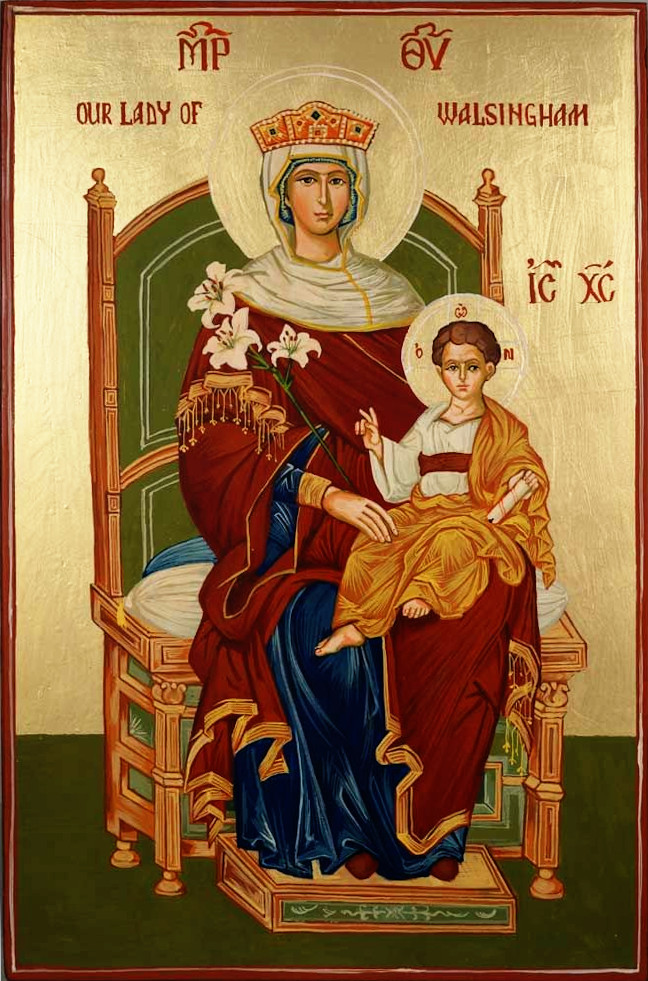06 July 2019
Seaxburg the Venerable, Abbess of Ely
Two weeks ago, we venerated the strict-but-sweet Saint Æþelþrýð, the princess and Northumbrian queen turned monastic who founded the Benedictine cloister at Ely. This week, we commemorate her saintly sister and successor as abbess in that house, Saint Seaxburg. Like her elder sister, Seaxburg grew up with a reputation for grace, modesty and humility. Also like her elder sister, Seaxburg was married before her entry into the cloister. Unlike her elder sister, she married only once, to Eorcenberht King of Kent the descendant of Saints Æþelberht and Berhte, and that marriage was decidedly not a celibate one the way both of Æþelþrýð’s were. Her hagiographers stress that she entered this marriage, not unwillingly as her sister had, but ‘as a latter-day Sarah’, a mother (or rather, genetrix) of a new and blessed tribe of holy men and women. To Eorcenberht, to whom she served as an equal help-meet, Seaxburg bore four children: the future kings of Kent Ecgberht and Hloþhere; and two saintly daughters who in the end became nuns, Saint Eormenhild of Ely and Saint Eorcengota of Faremoutiers.
Her husband died of plague in 664, and was succeeded as king of Kent by his son Ecgberht. The widowed Seaxburg did not return to her own land at once, but instead stayed in Kent to look after her children – particularly Ecgberht, who was still a child when he was chosen to succeed his father, and for whom his mother acted as regent. The queen mother’s pious influence on the young king may be easily seen in his choice of company. Many holy men came to visit Kent during Ecgberht’s reign, and with hospitality he hosted and feasted Saint Wilfrið, Saint Biscop and Saint Hadrian at his court. In addition, Ecgberht arranged for provisions to be made for the Byzantine Saint Theodore of Tarsus to come to England.
Once Ecgberht reached his majority in 670, however, his mother withdrew from her earthly life, and took the nun’s veil from the hands of Saint Theodore of Tarsus himself. She undertook a rather more rigorous ascetic discipline and a larger share of physical toil than the other nuns, on account of the easier living she had enjoyed as queen and queen-mother; but she did not let this become a cause for vainglory or delusion. She retired first to a Benedictine house at Milton Regis in Kent which she helped to found, now the Holy Trinity Church in that village. She also founded another Benedictine monastic house for women at Minster-in-Sheppey (where her daughter Eormenhild was also a nun), and was abbess there for a time. She later joined her holy sister Æþelþrýð at Ely, and upon her blessed repose in 679 took up her office as abbess there. She was chosen as abbess not because of her bloodline or her high birth, but because she had been a steward and a mother in her earthly life and had brought that same motherly love to her vocation in the cloister. During her abbacy, she translated her beloved elder sister’s body and was the one to discover that it was incorrupt. She served as abbess at Ely for twenty years, going to meet the Lord on the sixth of July, 699.
Seaxburg of Ely is known to the English hagiographers both as an exemplary mother to her natural children, and also as an exemplary monastic mother to her children after the spirit: a true genetrix in both rôles. Holy Mother Seaxburg, righteous queen, meek nun and loving mother of nations, pray unto Christ our God that our souls may be saved!
Labels:
Anglophilia,
Britannia,
history,
mediæval nonsense,
Pravoslávie,
prayers,
Viri Romæ
Subscribe to:
Post Comments (Atom)














No comments:
Post a Comment